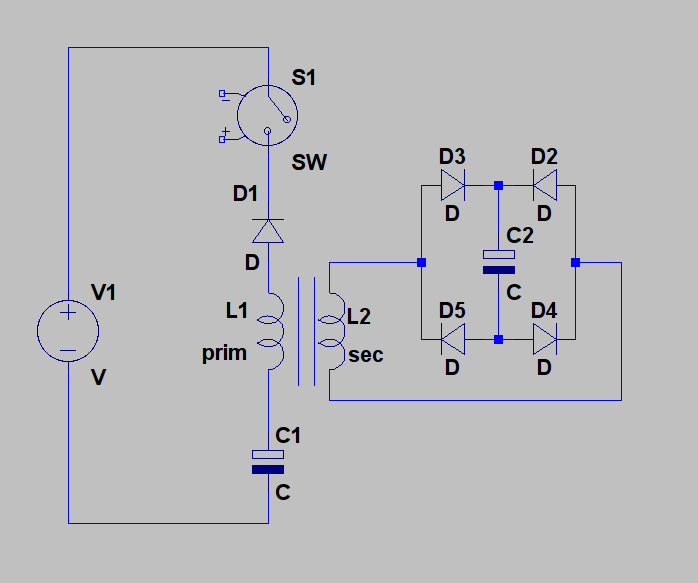This makes you wonder what capacitor 38 is for:
Edwin V. Gray: Electromagnetic Association Motor (Pulsed Capacitance Discharge Motor, &c: US Patent # 3,890,548 )

The patent claims:
This sounds like rubbish to me, because the other terminal of the coil is practically open, unless the safety spark gap fires.
If we speculate that may be Gray got his hands on some earlier designs, like from Tesla, and we remember that in the old days electrolytic capacitors were built much like car batteries with a considerable distance between the actual plates, it is possible that indeed an old school electrolytic capacitor does give you a suitable delay line, while a modern, compact one does not. So, it is possible that the batteries were an addition in the zeventies to an earlier design from somewhere else, because the electrolytic capacitors at that time had considerably different properties than the ones from the thirties in terms of plate distance and therefore delay line properties...
Update: and also gives us an interesting link to the Meyer/Puharich WFC systems, which also have a considerable plate distance, hence a delay line for currents to occur...
Edwin V. Gray: Electromagnetic Association Motor (Pulsed Capacitance Discharge Motor, &c: US Patent # 3,890,548 )

The patent claims:
Upon cessation of the energy pulse (arc) within the conversion switching element tube the inductive load is decoupled, allowing the electromagnetic field about the inductive load to collapse. The collapse of this energy field induces within the inductive load a counter EMF. This counter EMF creates a high positive potential across a second capacitor 38 which, in turn, is induced into the second energy storage device or battery 40 as a charging current. The amount of charging current available to the battery 40 is dependent upon the initial conditions within the circuit at the time of discharge within the conversion switching element tube and the amount of mechanical energy consumed by the work load.
If we speculate that may be Gray got his hands on some earlier designs, like from Tesla, and we remember that in the old days electrolytic capacitors were built much like car batteries with a considerable distance between the actual plates, it is possible that indeed an old school electrolytic capacitor does give you a suitable delay line, while a modern, compact one does not. So, it is possible that the batteries were an addition in the zeventies to an earlier design from somewhere else, because the electrolytic capacitors at that time had considerably different properties than the ones from the thirties in terms of plate distance and therefore delay line properties...
Update: and also gives us an interesting link to the Meyer/Puharich WFC systems, which also have a considerable plate distance, hence a delay line for currents to occur...









 So, everything put in series would just create a series oscillation circuit with the coil and LV Cap, which would just ring for a while and dissipate all energy.
So, everything put in series would just create a series oscillation circuit with the coil and LV Cap, which would just ring for a while and dissipate all energy.
Comment